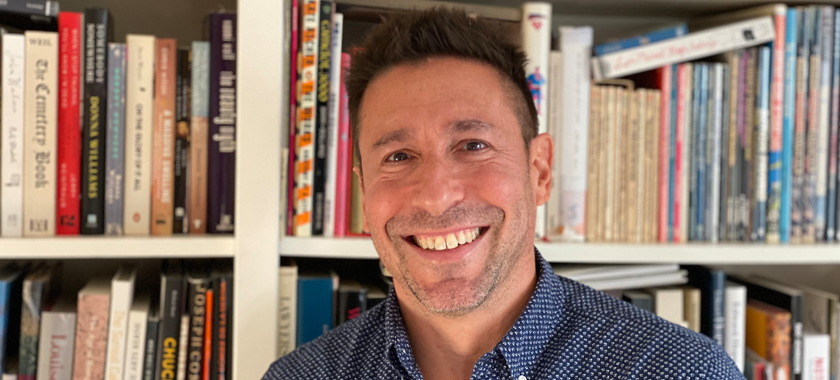Business of Art | Copyright 101
“As soon as you create something in a tangible form then you have copyright rights in that creation.” – NYFA Board Chair and Intellectual Property Lawyer Marc Jason
NYFA Board Chair Marc Jason is an experienced litigator who has argued patent, trademark, and copyright cases in courts throughout the United States. As Senior Counsel at Amster, Rothstein, & Ebenstein LLC, Ret., Jason has represented clients in a broad range of industries including apparel, toys, electronics, textiles, and medical devices. He recently spoke to NYFA about copyright essentials, and how creatives can arm themselves with information to help protect their work as well as enjoy the freedoms to reference others’ works to help move our culture forward.
It’s not unheard of for folks to confuse patent, trademark, and copyright, however each is a very distinct area of the law. So, let’s first define patent and trademark before jumping into more specifics about copyright. According to Jason, patents deal with useful inventions like light bulbs and smartphones. There is a rigorous process for securing a patent, but once you do they are typically good for about 20 years. Trademarks deal with symbols, words, logos, and taglines (think Coca-Cola and “Just Do It”) that identify a supplier of goods or services. A trademark can be good forever as long as it is in use, though you’ll have to file periodic renewals to maintain a federal trademark registration.
1. Copyright Basics
Copyright protects creative endeavors, and it’s important to note that as soon as you create something in a tangible form you automatically have copyright rights. This could mean paint on a canvas, writing on paper, or a digital recording–anything that records your ideas in a tangible way. For visual artists, for example, there are different rights within their copyright: the right to reproduce, the right to distribute, etc. Jason advises that you consider these rights when selling your work, as how you proceed may have long-term impacts for what you do with it and what profit you make off of it long into the future. “It helps to have things in writing,” advises Jason. And though technically you will have copyright rights once creating something tangible, you can’t go after a copyright infringer until you have a federal registration. To register your creation with the government, you can file for copyright online for as little as $45. You’ll need to send a copy of the work and presumably, unless what you submit is not copyrightable (one word, or a short phrase, for example), the Copyright Office will approve your registration. Note: the office does not do a thorough examination to determine if your copyright is valid nor do they have a database where you can search for similar works, so there may be other work/s that exist and are copyrighted that are similar to yours. Copyright law in the United States changes, but at present copyright is valid for 70 years after the creator’s death, after which point it becomes part of the public domain.
2. Copyright Infringement
Copyright.gov defines copyright infringement as occurring when a copyrighted work is reproduced, distributed, performed, publicly displayed, or made into a derivative work without the permission of the copyright owner. According to the law, if there is a work out there that is similar to yours but created without influence from your work, it does not qualify as copyright infringement. Jason acknowledges that since most art is derived from what has come before, it becomes extremely tricky to judge when copyright infringement occurs. To be copyrightable, the amount of original expression can be very minimal. He emphasizes that only the original part of what is created is protectable, but cautions heavily against the “all I have to do is change three things” logic to creation. In court, you have to prove to a jury that the other person saw your work and copied it and that it is substantially similar—using what is called the “ordinary observer” test to evaluate similarity. “There’s not science to it at all,” says Jason.
3. When and How to Take Action
In order to pursue copyright infringement litigation, you need to have registered your work for copyright. To be eligible for an award of statutory damages or attorneys’ fees if successful, the application to register must be filed within three months of making it public. With 20 years of experience, Jason strongly advises to avoid litigation if possible: to sue and go to court is extremely costly and time-consuming. Only a few percent of these cases actually go to trial, as most end up settling. So, how to advocate for yourself and your work? Jason first recommends contacting the other party and asking them nicely to take the work down or stop using it. “If you’re not asking for money, it’s easy enough. And it’s much easier to be nice than to come out threatening,” says Jason. If nothing happens, you will next need to determine if you want to take things to the next level. You could potentially escalate with a Cease and Desist letter which will be drafted by a lawyer and cite statutes and other legalese. Jason finds that oftentimes this causes movement and elicits a response from the other party. If this doesn’t work, the next step is filing a complaint and setting the stage for litigation and, ultimately, trial. If it reaches litigation, the process could take several years to get resolved. Depending on the strength of your case, you could stand to receive statutory damages of up to $150,000 for an intentional, willful infringement or, alternatively, lost profits or other harm you have suffered and some of the defendant’s profits (if they have benefited monetarily off of your work).
Unfortunately, copyright is not widely understood and many people may not be aware that they are committing an infringement when using or referencing your work—especially if they find it online. To be safe, add a copyright notice to works shared online so folks know that it’s protected.
– Amy Aronoff, Senior Communications Officer
If you’re interested in learning more about copyright-related issues, check out our Copyright, Fair Use, and Gallery Agreements and Your Art Will Outlive You – Protect It Now! blog posts. You can find more articles on arts career topics by visiting the Business of Art section of NYFA’s website. Sign up for NYFA News and receive artist resources and upcoming events straight to your inbox. Have an arts career question? You can contact NYFA staff directly by emailing [email protected].





